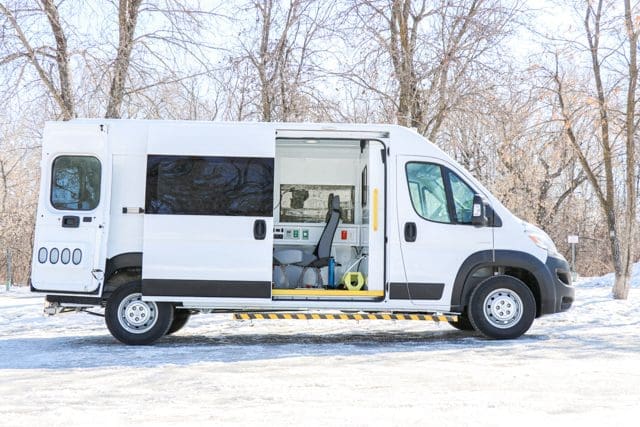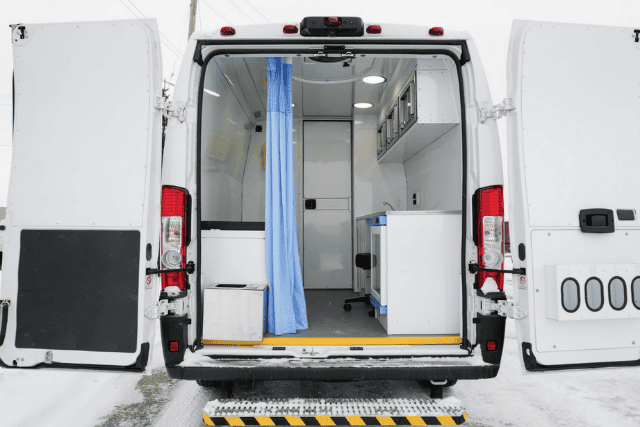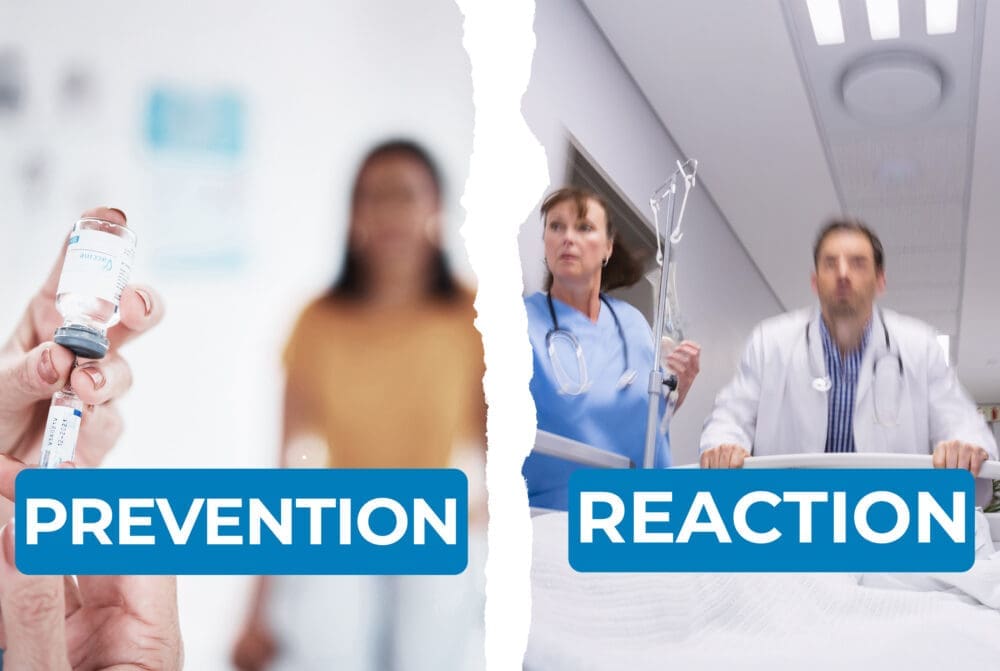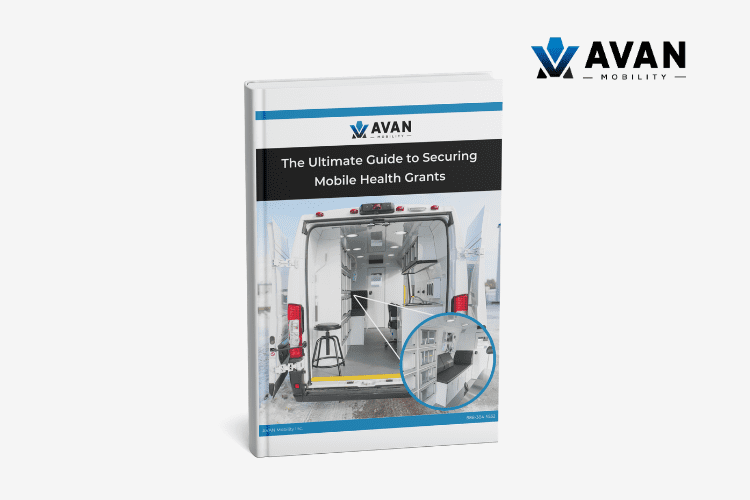Mobile medical vehicles from AVAN Mobility range in cost between $125,000 to $225,000. If your organization is in the market for one, you might be pondering how cost-effective these investments can be. The decision you make here has a big impact on your bottom line. Failure to know about the cost-effectiveness of mobile medical vehicles can result in financial strain, unfulfilled impact, and leave you at a competitive disadvantage.
At AVAN Mobility, we’re focused on crafting innovative mobile medical vans that help organizations improve healthcare accessibility. Our dedicated team, driven by our core values, designs and manufactures these unique solutions. With our “we can” attitude, we tackle challenges head-on to ensure healthcare is within reach for all.
In this article, you’ll learn more about the cost-effectiveness of mobile medical vans. You’ll leave with a fresh perspective knowing how much of an impact your investment will make in the lives of people across the U.S.
Uncovering the value of a mobile medical vehicle
Mobile medical vehicles are special vans, trucks, or trailers that offer healthcare to folks across the U.S. who live far away from regular clinics or find it tough to reach them. They provide services like check-ups, disease prevention, screenings, vaccines, dental care, and more. They’re also handy for managing long-term health problems and handling emergencies.
But are these mobile medical vehicles budget-friendly? The answer is a big yes, and here’s why:
1. Cutting unnecessary ER visits
A report from 2015 found that over 40% of emergency room (ER) visits from 2010 to 2014 were either not emergencies or could’ve been handled by a regular doctor. The price for each of these avoidable ER trips was around $474. Mobile medical vehicles step in to provide the right care at the right time, saving both money and resources for the healthcare system and the patients.
When there’s a sudden health problem, mobile medical vehicles save patients money by keeping them away from costly emergency room trips. It’s estimated that each of these mobile clinics stops about 600 ER visits every year. That’s a lot of money saved!
2. The magic of preventative care
Preventive care is all about stopping or spotting diseases before they get serious and costly. Mobile medical vehicles do this by offering screenings for diseases like cancer, diabetes, and high blood pressure. They can also give vaccines to guard against infectious diseases.
For instance, a project called the Mobile Health Map estimated that these mobile clinics in the U.S. saved an estimated 3,200 lives and prevented 14,000 hospital stays every year. They also figured out that for every dollar spent on preventive care, $12 was saved. That’s a pretty good deal!
Let’s look at some specific examples of preventative care:
Preventing tooth problems: Mobile dental clinics help people avoid tooth decay and gum disease, which, if left unchecked, can lead to infections and even loss of teeth. You can imagine how expensive and uncomfortable it can be to fix these problems. Mobile dental care prevents all of that trouble and added expense by addressing the issue early.
Early detection of breast cancer: Mobile mammography units are champions in detecting breast cancer at an early stage. When breast cancer is caught early, the chances of survival are much higher, and treatment costs are lower. This means fewer hospital stays and less money spent on severe treatments.
Managing diabetes: Mobile diabetes clinics are experts in helping patients manage their blood sugar levels. Doing this prevents nasty complications like kidney failure and blindness. Without proper care, treating these complications can be quite expensive. Mobile clinics keep these costs down and help patients live healthier lives.
3. Helping people in need
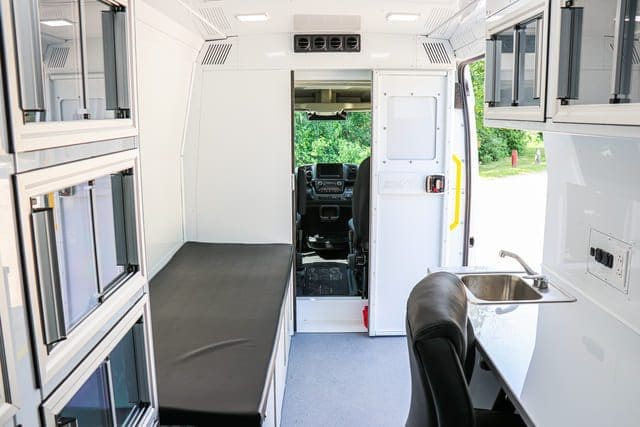
Lots of people in rural areas, low-income neighborhoods, minority communities, and among the homeless have a hard time getting healthcare. They might not have a ride, insurance, or even know where to go.
Mobile medical vehicles fix this by bringing healthcare right to where these folks live and work. They make healthcare easier to get and better in quality. They can also help with other things that affect health, like poverty and education, by teaming up with local groups and giving referrals to other resources.
4. A mobile medical vehicle helps to ease crowded hospitals
Mobile medical vehicles are not just helpful to patients; they’re also a big help to hospitals and the whole healthcare system. Here’s how they do it:
Imagine hospitals like bustling airports during the holiday season, packed with people and not enough space. Mobile medical vehicles swoop into the rescue. They take care of patients with less urgent needs, which helps hospitals focus on the really serious cases.
Mobile medical units can reduce hospital admissions, and that means less overcrowding and shorter wait times for everyone, also resulting in lower costs for the medical system.
Hospitals need to stay financially healthy too. Mobile medical units can help with that. They expand the hospital’s reach, attracting more patients who might not have considered it before. This means more money coming in, which can be used to improve the hospital and hire more staff. Plus, when hospitals provide care through mobile units, their reputation grows. People trust and respect them more.
5. Making patients happier and healthier
It’s not just about numbers. Mobile units give patients care that’s just right for them. They consider a person’s culture and personal needs, making patients more satisfied with their care. When people are happy with their healthcare, they’re more likely to stick with it, which keeps them healthier.
So, you can see that mobile medical vehicles aren’t just a flexible way to provide healthcare; they’re also a money-saver and cost-effective investment. They boost the health and quality of life for many Americans who need it most while also keeping the healthcare system and society’s cash in check. It’s a win-win solution for everyone.
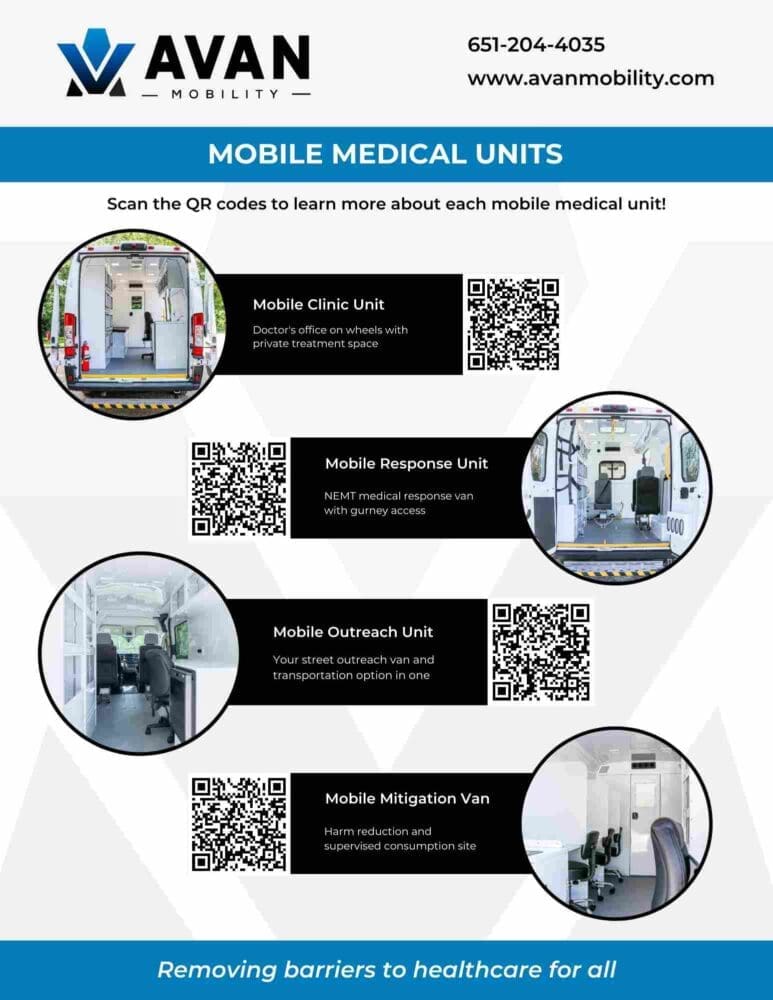
Final thoughts on the cost-effectiveness of a mobile medical vehicle
The U.S. mobile clinics market was valued at 1.66 billion in 2022 and is expected to expand at a compound annual growth rate (CAGR) of 11.2% from 2023 to 2030. This growth is driven by the increasing need for preventive care. It’s also due to the rising prevalence of chronic diseases, the growing demand for cost-effective and accessible primary care solutions, and the government and philanthropy funding for mobile health programs.
Mobile medical vehicles are a cost-effective solution for healthcare in the U.S. They can provide healthcare services to underserved communities, save money for patients and hospitals, improve health outcomes and satisfaction, and reduce health disparities.
What’s next on your journey with AVAN Mobility?
Maybe you’ve been on the fence about investing such a large amount of money into a mobile medical vehicle. You made it to this article while researching the cost-effectiveness of these vehicles.
Now that you have a better idea of how effective these investments are, you should start preparing and thinking about what equipment you want in your mobile medical vehicle. For a headstart on that, read our mobile medical van customization article.
At this point, you’re probably also wondering what mobile medical vehicle manufacturers are available in the U.S. Read these two articles to get a better idea about that:
If you’re considering getting a mobile medical vehicle for your organization or community, taking the next step is easy. Reach out to an expert at AVAN Mobility, and we’ll provide you with a free quote. We’re here to assist you every step of the way. Your journey to providing essential services starts with a simple inquiry.
*Keep in mind that all of the costs discussed in this article are estimates and are subject to change without notice.
